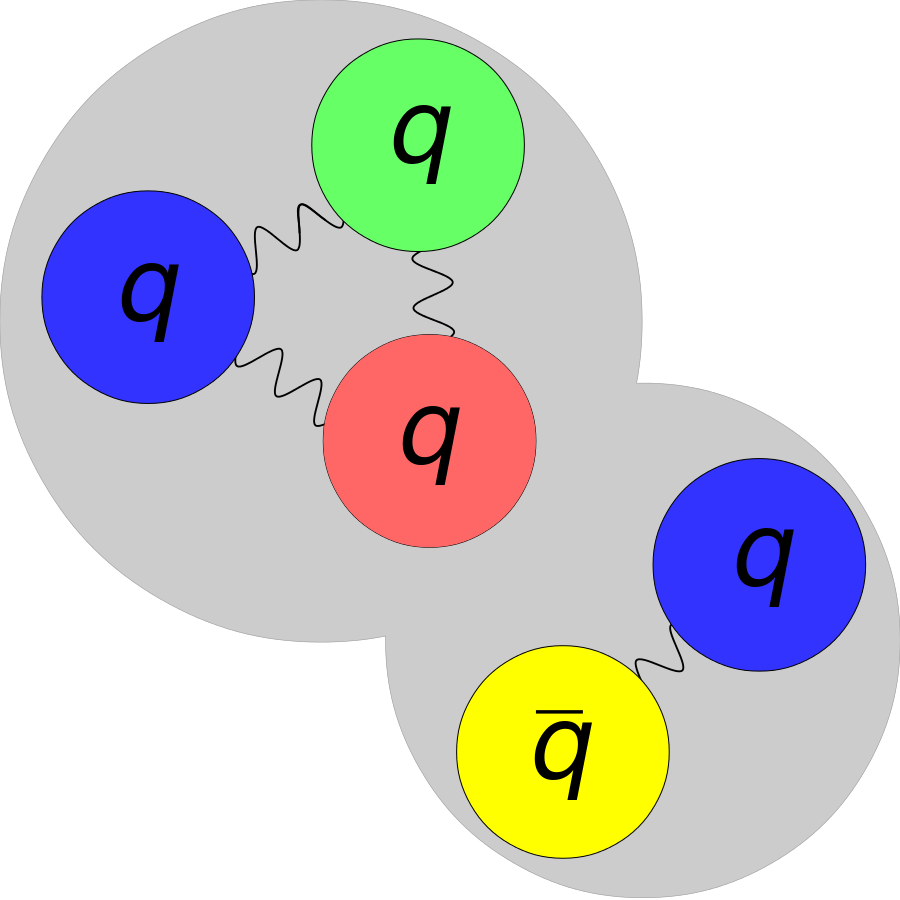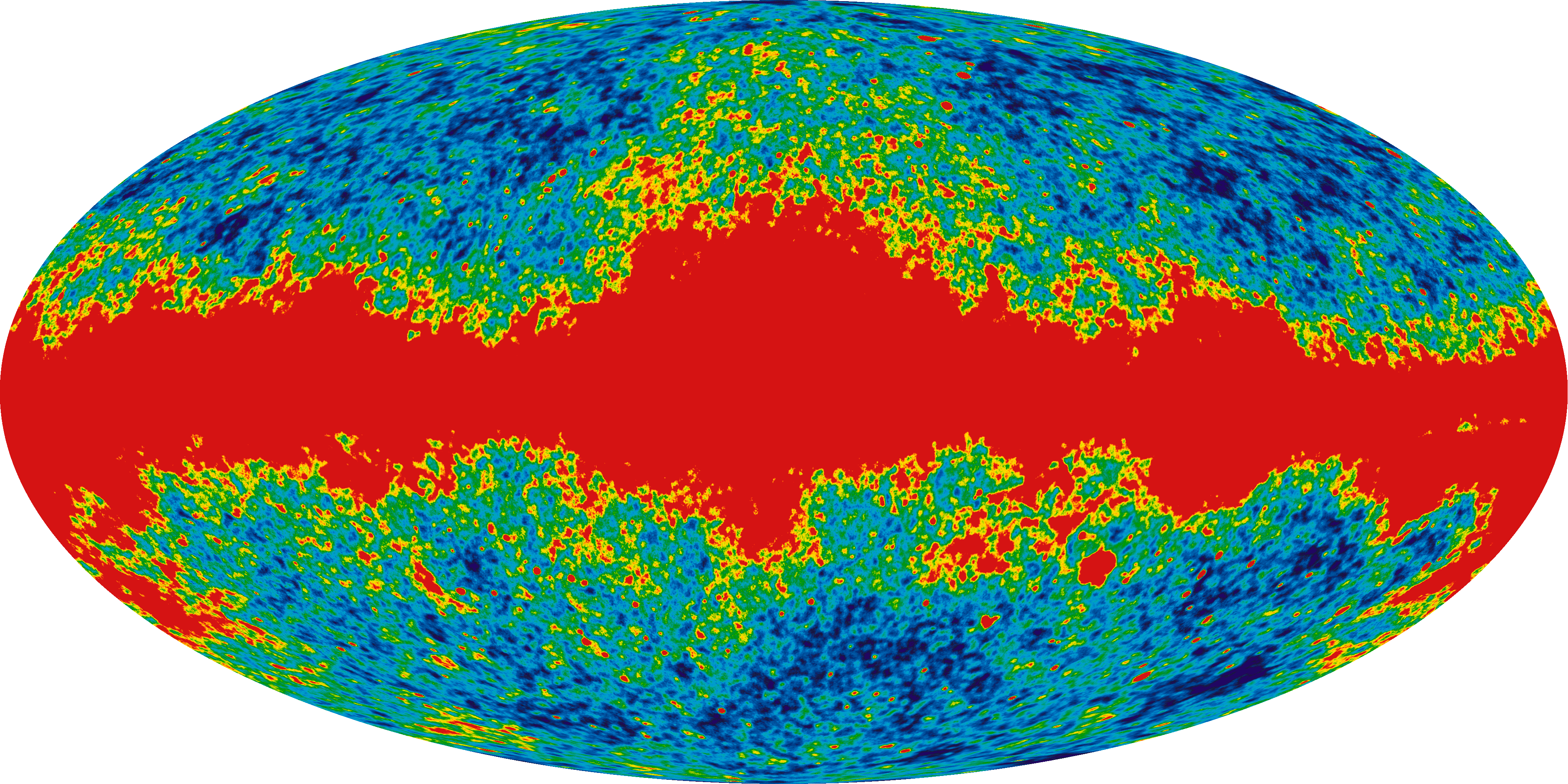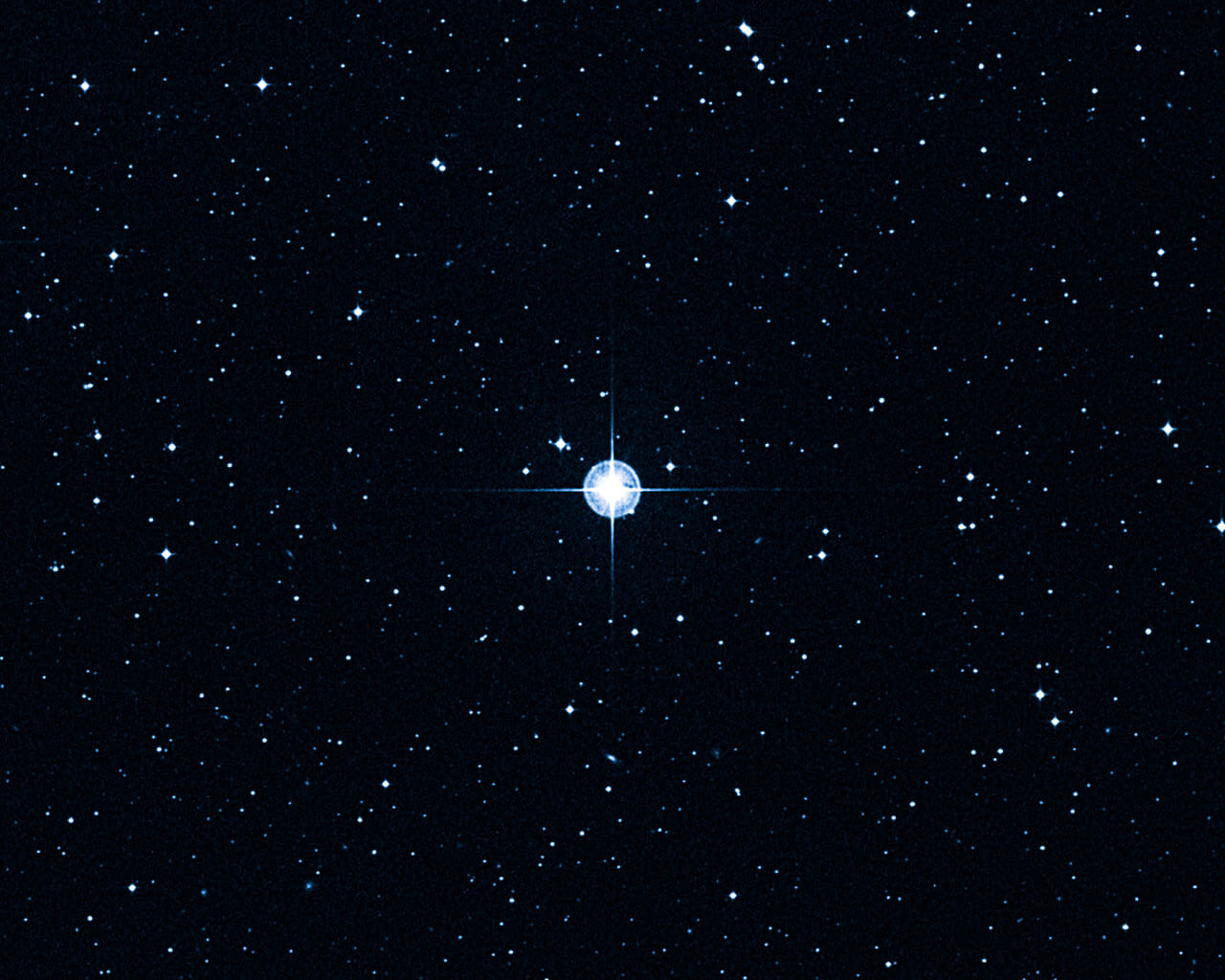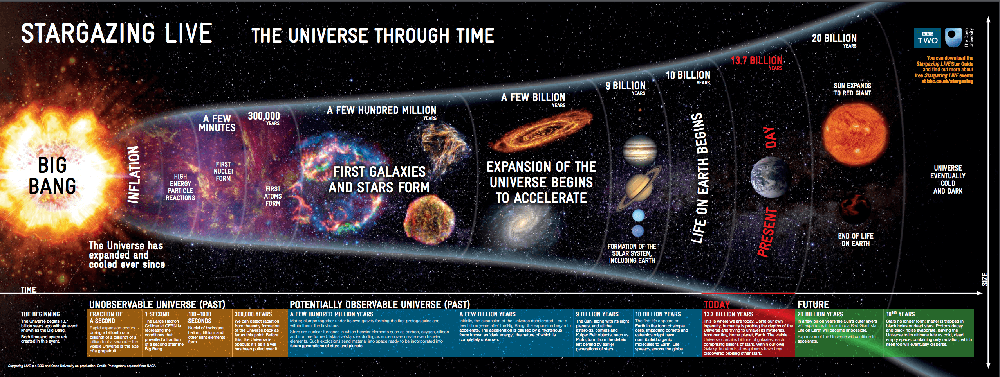The universe is immense in its size. The size of the entire universe is still unknown and what people talk about is about the observable universe. The observable universe is estimated to be about 93 billion light-years (8.8×1026 m) in diameter. Here, the observable universe means the spherical region in space that can be seen from Earth and its space-based telescopes and exploratory probes at the present time. Talking about the observable universe, it must be kept in mind that every location in the universe has its own observable universe, which may or may not overlap with the one centered on Earth.
There are many theories that explain the origin of the universe and some may relate completely with god but the Big Bang theory is prevailing and broadly accepted cosmological description. According to the estimation of this theory, space and time emerged together 13.799±0.021 billion years ago and the energy and matter initially present have become less dense as the universe expanded. This age number is beyond our imagination, right? In case of age of the universe, age is not just a number. It can tell us many about our universe like its origin, its constitutions, its evolutions, and many others.
Big Bang was first suggested by Georges Lemaître, a Belgian priest, in the 1920s. This very first idea grew when Edwin Hubble observed that the galaxies are speeding away from us in all directions. Also, the discovery of cosmic microwave radiation- which is regarded as the echoes of the big bang, by Arno Penzias and Robert Wilson in1960s buttressed the predictions of Big Bang.
The universe came into its existence, current, through the Big Bang followed by a number of epochs.
An epoch is a moment in time from which nature or situations change to such a degree that it marks the beginning of a new era or age.
Planck epoch
Planck epoch occurred in the time interval between 0 to 10-43 seconds.
The Planck epoch happened immediately after the event which began our known universe. Immediately after the event, the universe was compact and immensely hot that the average energies within the universe were so high that everyday subatomic particles could not form and the universe itself was less than a million billion billionths the size of a single atom.
At this stage, the universe was only 10−35 meters wide and the temperature was approximately 1032 degrees Celsius. It is believed that due to the extraordinarily small scale of the universe at this time, the quantum effects of gravity dominated physical interactions.
During this epoch, the four fundamental forces that shape our universe, known as gravitation, electromagnetism, the weak nuclear force, and the strong nuclear force, were combined and formed one fundamental force.
Though there exists no hard evidence yet that such a combined force existed, many physicists believe it did.
Grand unification epoch
Grand unification epoch took place between 10−43 seconds and 10−36 seconds after the Big Bang.
Though the universe started to cool down and expand, during the Grand Unification Epoch the universe was still extremely hot and incomprehensibly small, the universe had cooled down enough to allow the force of gravity to separate from the other three fundamental forces.
At the end of the Plack epoch, gravity separated from the electronuclear force but three of the four fundamental interactions—electromagnetism, the strong interaction, and the weak interaction—were unified as the electronuclear force at grand unification epoch.
The grand unification epoch ended at approximately 10−36 seconds after the Big Bang and at this point, the strong force separated from the other fundamental forces.
Electroweak epoch
Electroweak epoch took place between 10−36 seconds and 10−32 seconds after the Big Bang.
As the universe was cooling - the temperature dropped to 1028 kelvin, at this stage, the strong force separated from the electroweak interaction but still the cooling was not enough to separate electromagnetism and the weak interaction, and they remain merged into a single electroweak interaction.
At 10−33 seconds of Big Bang, space is subjected to inflation where space expands by a factor of the order of 1026 over a time of the order of 10−33 to 10−32 seconds. Further, the universe is supercooled from about 1027 down to 1022 kelvin. It is not known exactly but it is believed that cosmic inflation ends at 10−32 seconds after the Big Bang.
At 10−12 seconds after the Big Bang, the universe's temperature continued to fall below a certain very high energy level and a third symmetry breaking occurs called electroweak symmetry breaking.
After this electroweak symmetry breaking, the fundamental interactions - gravitation, electromagnetic, weak, and strong interactions - have all taken their present forms, and fundamental particles have their expected masses. But still, the temperature of the universe was too high to allow the stable formation of many particles we now see in the universe, so there are no protons or neutrons, and therefore no atoms, atomic nuclei, or molecules.
Quarks epoch
Quark epoch began approximately 10−12 seconds after the Big Bang and ended when the universe was about 10−6 seconds old and this began immediately after electroweak symmetry breaking.
At this stage, the universe has cooled down to about 1015 kelvin, and the four fundamental forces were also separated, leading to a higher degree of stability of the universe.
It is the Quark epoch when the universe was filled with a dense, hot quark-gluon plasma, containing quarks, leptons, and their antiparticles. These particles collide and annihilate one another on impact. At about 10−11 seconds, a process known as baryogenesis - that for about one in every billion quark-antiquark collisions the quark was not annihilated, a surplus of quarks to began to accumulate. It is believed that due to this asymmetry of quarks to antiquarks mass exists today, otherwise particles may have just collided and destroyed each other until the end of time.
Hadron epoch
Hadron epoch took place at the time interval between 10−6 seconds and 1 second after the Big Bang.
At this stage, the universe was just (compared to the previous stages temperatures) around 1010 kelvin hot. This allowed quarks to combine and form hadrons. Hadrons are subatomic particles made up of quarks, anti-quarks, and gluons and there are two categories of known hadrons known as baryons and mesons. Baryons are made up of three quarks whereas mesons are made up of one quark and one anti-quark. The protons - most well known and important baryon, began to collide with electrons at extremely high speeds which formed neutrons and neutrinos.

As the temperature of the universe continued to fall, new hadron/anti-hadron pairs were no longer produced, and most of the newly formed hadrons and anti-hadrons annihilated each other, giving rise to pairs of high-energy photons. When this epoch ended, a comparatively small residue of hadrons remained. Theory predicts that about 1 neutron remained for every 7 protons.
At such a high temperature, protons began to collide with electrons at extremely high speeds which formed neutrons and neutrinos.
At approximately 1 second after the Big Bang, neutrinos decouple and they begin traveling freely through space. As neutrinos rarely interact with matter, these neutrinos still exist today, analogous to the much later cosmic microwave background, known as cosmic neutrino background (CνB).
Furthermore, within about one second of the Big Bang, it is also believed that there may have formed primordial black holes in the universe. Typically, primordial black hole formation requires density contrasts (regional variations in the universe's density) of around ~ 0.1 or 10%, and several mechanisms like reheating, cosmological phase transitions could have produced such a dense region in the early universe.
Lepton epoch
Lepton epoch occurred between 1 second and 10 seconds after the Big Bang. The lepton epoch follows a similar path to the earlier hadron epoch. After the Hadron epoch, universe expanded so much, and the energy density had fallen to such a level, that no more hadrons could be created. However, the energy density was enough to create lighter particles, known collectively as leptons.
Initially, leptons and antileptons are produced in pairs but at about 10 seconds after Big Bang, the temperature of the universe falls to the point at which new lepton–antilepton pairs are no longer created and most remaining leptons and antileptons quickly annihilated each other. This annihilation gives rise to pairs of high energy photons and leaving a small residue of non-annihilated leptons. Then there started the photon epoch.
Photon epoch
The Photon epoch started from 10 seconds and ends at about 370,000 years of the Big Bang.
After 10 seconds of the Big Bang, the universe became too cool to create them out of the radiation (light) that still filled space at this time. As most leptons and antileptons are annihilated at the end of the lepton epoch, this mutual annihilation of all that matter and anti-matter give rise to high-energy gamma photons which then dominated the universe for 370,000 years.
370,000 years after the Big Bang the temperature of the universe fell to the point where nuclei could combine with electrons to create neutral atoms. Then photons no longer interacted frequently with the matter, and the universe became transparent and the cosmic microwave background radiation (CMBR) was created and then structure formation took place.

After Lepton epoch, the Nucleosynthesis of light elements occurred and this occurred between 2 minutes and 20 minutes after the Big Bang.
At first, however, it was too hot for nuclear fusion to occur, around the end of the first minute, the universe cooled down and fusion starts occurring. During the fusion protons and neutrons binds together to form deuterium and tritium, and then helium nuclei and even a small proportion of lithium and beryllium nuclei.
At the end of Big Bang nucleosynthesis, there only existed stable nuclides - protium (single proton/hydrogen nucleus), deuterium, helium-3, helium-4, and lithium-7.
Now there started the matter-dominated era.
Matter domination
Until now the universe was ruled by radiation such as photons and neutrinos, called radiation dominated era. As the universe expands and cooled, the temperatures went on decreasing and gradually the universe becomes mater dominated universe and this happened from around 47,000 years of the Big Bang.
Gradually at around 100,000 years of the Big Bang, the universe was cooled enough for helium hydride, the first molecule, to form. Later in April 2019, this molecule was first announced to have been discovered in interstellar space.
About 370,000 years after the Big Bang, two connected events, recombination and photon decoupling occurred in the universe. In the recombination, electrons combine with nuclei to form atoms, mostly hydrogen and helium. At about 10 to 17 million years, the universe cooled from some 4000 K down to about 60 K. Consequently at about 100 million years, smaller (stars) and larger non-linear structures (quasars) begin to take shape and it takes 200–300 million years, from the Big Bang, for the first stars to shine.
370,000 years after the Big Bang, the dark age of the universe started where the temperature of the universe decreased from 4000 K to about 60 K. Universe at this stage has only two sources of photons. They are the photons released during recombination/decoupling (as neutral hydrogen atoms formed), which we can still detect today as the cosmic microwave background (CMB), and photons occasionally released by neutral hydrogen atoms, known as the 21 cm spin line of neutral hydrogen.
At around 150 million years of the Big Bang, structures may have begun to emerge in the universe and early galaxies emerged around 380 to 700 million years.
As they started to emerge, the Dark Ages gradually ended. Because this process was gradual, the Dark Ages only fully ended around 1 billion years, as the universe took its present appearance.
200 million years after the Big Bang, a star called HD 140283, unconfirmed oldest star observed in the universe, formed.

Gradually forming the quasar, stars, and protogalaxies, at about 700 million years of the Big Bang smaller galaxies begin merging to form larger ones and 720 million years to form globular clusters in Milky Way's Galactic halo.
Finally, after 13.8 billion years of the Big Bang, we are here at the current universe which contains more than 1 billion trillion stars, 200 billion to two trillion galaxies, planets being more than 1024 planets.
Watch and download the artist's interpretation of the Big Bang.
